#Abolition Of Zamindari
Text
India Agriculture
Indian agriculture is the primary source of livelihood for India’s population. As of 2018, agriculture employed more than 50% of the Indian work force and contributed 17–18% to country's GDP.
Indian agriculture is the primary source of livelihood for India’s population. As of 2018, agriculture employed more than 50% of the Indian work force and contributed 17–18% to country’s GDP.
The history of agriculture in India dates back to the Indus Valley Civilization. India ranks second worldwide in farm outputs.
There are hymns in Vedic literature dedicated to – Agriculture.
Consumer…

View On WordPress
#Abolition Of Zamindari#agriculture in India#Agriculture Reform in India#Bhoodan Yojana#Ceilings on Landholdings#Components Of Land Reforms#Consolidation of Landholdings#India Agriculture#indian agriculture#Land Reforms#Objective of Land Reform#Post-Independence Agriculture in India#Pre-Independence Agriculture in India#Tenancy Reforms#Zamindari system
1 note
·
View note
Text
youtube
#AP - Profiles Of The Districts - Krishna - Part 3| AP Geography | TOne Academy | M N Madhuri#The state of Andhra Pradesh is divided into 13 administrative districts spread across 2 regions :-#1. Coastal Andhra#2. Rayalaseema#This particular video throws light on Krishna District from the exam point of view#this video is a must watch#apdistricts#approfile#profilesOfTheDistricts#toneacademy#tspsc#geography#geographyforcompetitiveexams#EastGodavaridistrict#eastgodavari#westgodavari#westgodavaridistrict#For any queries/doubts/information - we are just an email away - mail us @ [email protected]#Subscribe to : https://bit.ly/2YQOgbs#Abolition Of Zamindari Act - https://youtu.be/HUVTHaEvl-E#Seasons - https://youtu.be/FtfdJiUYVPE#Problems on Time & Work Concept – 5 Efficiency - https://youtu.be/vAFcu4jaZ9Y#Indus Valley Civilization - Society - https://youtu.be/JFo0fnVlXTk#Fundamental Rights-Protection In Respect of Conviction for Offences Part-6 - https://youtu.be/APa4KcCmGp4#Latitudes And Longitudes - https://youtu.be/rx1nYENfuoE#Problems On Time and Work - Concept-3 Leaving and Joining-Part 3 - https://youtu.be/Ud4OuneetS0#Land Administration Under Nizams - https://youtu.be/3fEvTJpbCjw#Land Reforms- Intermediaries in Telangana - https://youtu.be/f8rjm2ATrg0#Problems On Time and Work - Concept-3 Leaving and Joining-Part 2 - https://youtu.be/eY9zz6TpxzM#Motions Of The Earth - https://youtu.be/mihO3JoifLk
0 notes
Photo

Salient features of the U P Zamindari Abolition and land reforms Act 1950
0 notes
Text
Uttar Pradesh Zamindari Abolition RAHUL IAS
https://examophobia.com/product/uttar-pradesh-zamindari-abolition-rahul-ias-print-notes-for-ias-and-pcs-judicial-services/

1 note
·
View note
Text
Challenges Faced by Indian Farmers: Kisan Diwas

Farmers are said to be the pillars of our nation. India being an agricultural country, has 54.6 per cent of the total workforce in farming (Ministry of Agriculture). There won’t be food at home if you or your breadwinner quits working. There won’t be any food on the planet, though, if the farmer quits farming the ground! The significance of a farmer is obvious from this; it has increased as a result of the population growth and decline in farmland availability.
India is a significant agricultural powerhouse, with farmers and all other related labour serving as its foundation. India is a significant agricultural powerhouse, with farmers and all other related labour serving as its foundation. They provide us with the most important source of energy to humans, food. They play the initial and vital role in the whole process of growing our food and helping it reach us. Economically speaking, with a GVA of Rs. 46.44 lakh crore in 2021, the agriculture sector was responsible for an 18.8 per cent share. It was 20 per cent in 2018 which dropped down by 2 per cent due to various reasons in the country. Deforestation, poor irrigation facilities, climate change and other global reasons.

To praise the contribution of farmers in the country and raise awareness about their challenges, National Farmers Day is marked in India on 23rd December every year. The date 23rd December is specially chosen to celebrate the birth anniversary of the 5th Prime Minister of India, Shri Chaudhary Charan Singh, also known as the leader of farmers. He is known for introducing multiple policies for farmers and the agricultural sector during his tenure. In addition to “Abolition of Zamindari,” “Co-operative Farming X-rayed,” “India’s Poverty and Its Solution,” “Peasant Proprietorship or Land to the Workers,” and “Prevention of Division of Holdings Below a Certain Minimum,” he also wrote several other books and pamphlets.
Despite many laws passed by the government to aid the farmers, they still lag in helping the farmers of India through their struggles of minimum income, facilities, and insufficient yield. Today, they do not face just a couple of problems, their struggles lay at various levels that need to be addressed.
Challenges Faced by Farmers in India

Irrigation
One of the most crucial phases of farming is irrigation. Although India is the second largest irrigated country in the world after China, only one-third of the cropped area is under irrigation. In a country with a tropical monsoon like India, where rainfall is unpredictable, unreliable, and variable, irrigation is the most crucial agricultural input. India won’t be able to make significant agricultural advancements unless and until more than half of the planted area is covered by reliable irrigation. For large areas, irrigation is still necessary to boost agricultural yield. Water resources can be utilized to their fullest extent and easily delivered to the locations where they are most required through interstate cooperation on water management.
2. Small and fragmented land-holdings
India has a total farmland, sown area of 141.2 million hectares out of which, 189.7 million hectares pales into insignificance when we see that it is divided into economically unviable small and scattered holdings. The average holding size was 2.28 hectares from 1970 to 1971; this fell to 1.82 hectares from 1980 to 1981; and 1.08 hectares from 2015 to 2016. Additionally, as the land holdings are continuously divided, the number of properties continues to decrease even today. The issue of smaller and fractured lands is one of the key issues faced by Indian farmers in states that are heavily populated and actively cultivated. This results in a wide gap between small, medium, and big farmers.
3. Lack of mechanization
Despite the extensive mechanization of agriculture in some areas of the nation, the majority of agricultural operations are still conducted by hand in the majority of those regions, employing traditional equipment and implements like wooden ploughs, sickles, etc. A lack of funds refrains farmers from purchasing the advanced equipment available today that can boost cultivation and save loads of time and labour hours. The saved time and hours can be put to use for many other farm-related productive activities that are necessary.
4. Scarcity of Capital
Agriculture is a major industry in India contributing a huge chunk of the GDP, and much like other industries, it needs money to function. With the advancement of agricultural technology, the importance of capital input is growing. Framers are forced to borrow capital to increase the pace of agricultural production because their capital is tied up in their lands and stocks. Money lenders, traders, and commission brokers charge high repayment rates and purchase agricultural products at ridiculously low prices, the farmers are left with no other way to go and have to choose the high charging interest rates.
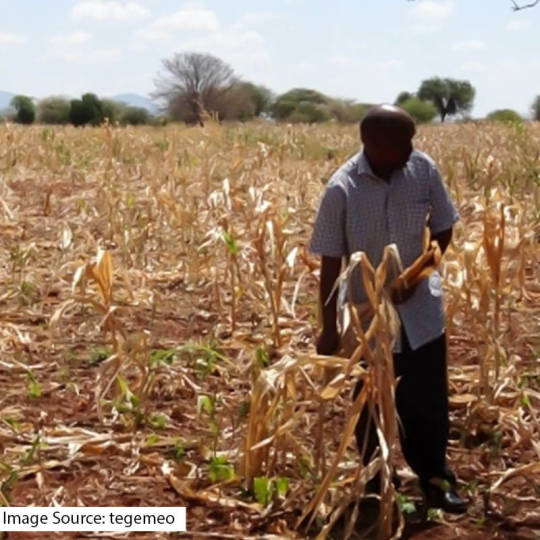
5. Natural Calamities
Despite facing all of these difficulties throughout their production cycle, farmers still have to deal with a tragedy caused by nature. It can take any shape, including floods, tsunamis, cyclones, unseasonably dry spells, severe weather, and a bird or insect attack that causes crop destruction. All of the farmers’ hard work is in vain because there is a lack of policy and financial aid available in the wake of such destruction. Large areas of fertile land are vulnerable to wind and water-induced soil erosion. Global warming and climate change are the biggest natural threats to farmers. It is essential to properly treat this area and bring it back to fertility.
National Farmers Day or Kisan Diwas aims to address all these and other issues of farmers in India and take firm steps in order to provide them with adequate aid to protect and increase their yield. Let us all take this day as an opportunity to be grateful for our farmers who provide us with our food, one of the basic necessities without which we cannot survive.
0 notes
Text
Challenges Faced by Indian Farmers: Kisan Diwas
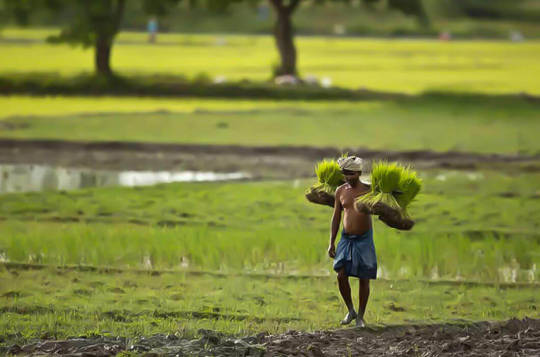
Farmers are said to be the pillars of our nation. India being an agricultural country, has 54.6 per cent of the total workforce in farming (Ministry of Agriculture). There won't be food at home if you or your breadwinner quits working. There won't be any food on the planet, though, if the farmer quits farming the ground! The significance of a farmer is obvious from this; it has increased as a result of the population growth and decline in farmland availability.
India is a significant agricultural powerhouse, with farmers and all other related labour serving as its foundation. India is a significant agricultural powerhouse, with farmers and all other related labour serving as its foundation. They provide us with the most important source of energy to humans, food. They play the initial and vital role in the whole process of growing our food and helping it reach us. Economically speaking, with a GVA of Rs. 46.44 lakh crore in 2021, the agriculture sector was responsible for an 18.8 per cent share. It was 20 per cent in 2018 which dropped down by 2 per cent due to various reasons in the country. Deforestation, poor irrigation facilities, climate change and other global reasons.
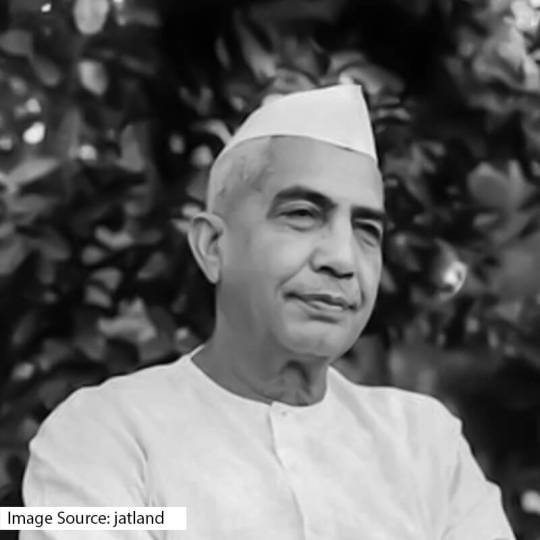
To praise the contribution of farmers in the country and raise awareness about their challenges, National Farmers Day is marked in India on 23rd December every year. The date 23rd December is specially chosen to celebrate the birth anniversary of the 5th Prime Minister of India, Shri Chaudhary Charan Singh, also known as the leader of farmers. He is known for introducing multiple policies for farmers and the agricultural sector during his tenure. In addition to "Abolition of Zamindari," "Co-operative Farming X-rayed," "India's Poverty and Its Solution," "Peasant Proprietorship or Land to the Workers," and "Prevention of Division of Holdings Below a Certain Minimum," he also wrote several other books and pamphlets.
Despite many laws passed by the government to aid the farmers, they still lag in helping the farmers of India through their struggles of minimum income, facilities, and insufficient yield. Today, they do not face just a couple of problems, their struggles lay at various levels that need to be addressed.
Challenges Faced by Farmers in India
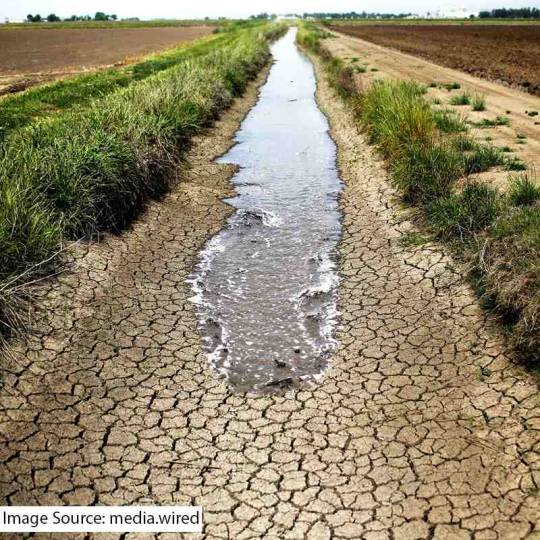
Irrigation
One of the most crucial phases of farming is irrigation. Although India is the second largest irrigated country in the world after China, only one-third of the cropped area is under irrigation. In a country with a tropical monsoon like India, where rainfall is unpredictable, unreliable, and variable, irrigation is the most crucial agricultural input. India won't be able to make significant agricultural advancements unless and until more than half of the planted area is covered by reliable irrigation. For large areas, irrigation is still necessary to boost agricultural yield. Water resources can be utilised to their fullest extent and easily delivered to the locations where they are most required through interstate cooperation on water management.
Small and fragmented land-holdings
India has a total farmland, sown area of 141.2 million hectares out of which, 189.7 million hectares pales into insignificance when we see that it is divided into economically unviable small and scattered holdings. The average holding size was 2.28 hectares from 1970 to 1971; this fell to 1.82 hectares from 1980 to 1981; and 1.08 hectares from 2015 to 2016. Additionally, as the land holdings are continuously divided, the number of properties continues to decrease even today. The issue of smaller and fractured lands is one of the key issues faced by Indian farmers in states that are heavily populated and actively cultivated. This results in a wide gap between small, medium, and big farmers.
Lack of mechanisation
Despite the extensive mechanisation of agriculture in some areas of the nation, the majority of agricultural operations are still conducted by hand in the majority of those regions, employing traditional equipment and implements like wooden ploughs, sickles, etc. A lack of funds refrains farmers from purchasing the advanced equipment available today that can boost cultivation and save loads of time and labour hours. The saved time and hours can be put to use for many other farm-related productive activities that are necessary.
Scarcity of Capital
Agriculture is a major industry in India contributing a huge chunk of the GDP, and much like other industries, it needs money to function. With the advancement of agricultural technology, the importance of capital input is growing. Framers are forced to borrow capital to increase the pace of agricultural production because their capital is tied up in their lands and stocks. Money lenders, traders, and commission brokers charge high repayment rates and purchase agricultural products at ridiculously low prices, the farmers are left with no other way to go and have to choose the high charging interest rates.
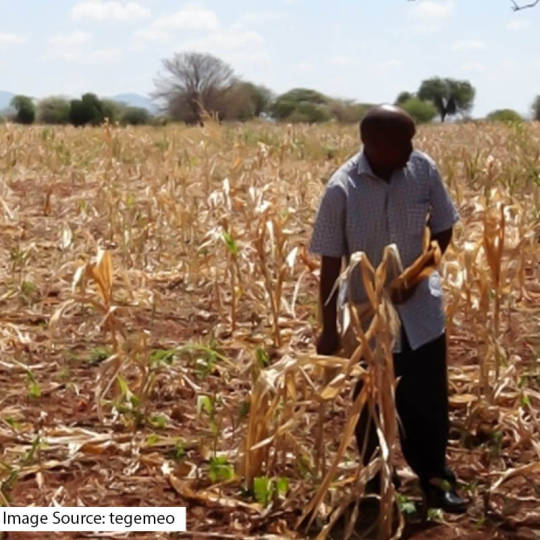
Natural Calamities
Despite facing all of these difficulties throughout their production cycle, farmers still have to deal with a tragedy caused by nature. It can take any shape, including floods, tsunamis, cyclones, unseasonably dry spells, severe weather, and a bird or insect attack that causes crop destruction. All of the farmers' hard work is in vain because there is a lack of policy and financial aid available in the wake of such destruction. Large areas of fertile land are vulnerable to wind and water-induced soil erosion. Global warming and climate change are the biggest natural threats to farmers. It is essential to properly treat this area and bring it back to fertility.
National Farmers Day or Kisan Diwas aims to address all these and other issues of farmers in India and take firm steps in order to provide them with adequate aid to protect and increase their yield. Let us all take this day as an opportunity to be grateful for our farmers who provide us with our food, one of the basic necessities without which we cannot survive.
Source - https://filaantro.org/blog/challenges-faced-by-indian-farmers-kisan-diwas/
0 notes
Text
LAND REFORM PROGRAMMES IN INDIA.
LAND REFORM PROGRAMMES:
Land reform programmes got the special attraction in the successive Five Year Plans to remove the defects of tenurial system prevailing at the eve of independence. Let us now consider briefly the main land reform measures undertaken by the Government of India.
They are:
A. Abolition of the Zamindari System
B. Tenancy Reforms.
C. Fixation of Ceiling of Land Holdings.
D.…
View On WordPress
0 notes
Text
Land Management Committee
Land Management Committee
INTRODUCTION
Land Management Committee or Bhumi Prabhandhak Samiti is a statutory committee of Gram
Sabha to assist it in the discharge of its duties of up-keep, protection and supervision of all property
vested in the Gram Sabha under section 117 of he U.P. Zamindari Abolition and Land Reforms Act,
and all other property vested in it or coming into its possession under…
View On WordPress
0 notes
Text
Is sovereign default inevitable? – II - Opinion
Is sovereign default inevitable? – II – Opinion
The first Prime Minister of India, Pandit Jawaharlal Nehru, said the following on the occasion of abolition of zamindari system in his country’s largest state, UP, in 1952:
Is sovereign default inevitable? – I
“I was reminded of the times, more than thirty years ago, when I used to wander among the peasants of this province in the districts of Allahabad, Pratapgarh, Jaunpur, Rai Bareilly,…
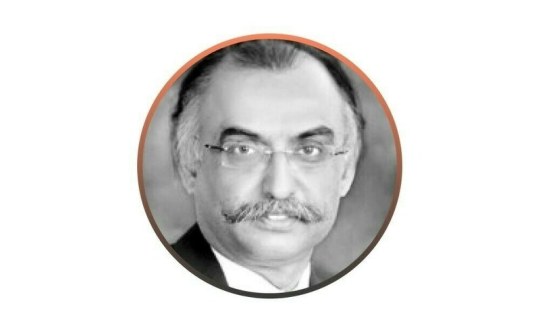
View On WordPress
0 notes
Text
Hardoi land dispute: 1987 order by DM against provisions; evict occupants, says Allahabad High Court
Hardoi land dispute: 1987 order by DM against provisions; evict occupants, says Allahabad High Court
THE ALLAHABAD High Court on Tuesday ruled that an order passed by the district magistrate of Hardoi district in 1987 regarding the “resumption of the land in favour of private Trust was against the provisions” of Section 132 of the Uttar Pradesh Zamindari Abolition and Land Reforms Act, 1950. The court observed that the plot – three acres of “public utility land” – was wrongfully being used by a…
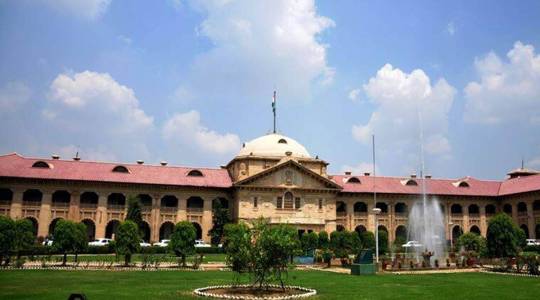
View On WordPress
0 notes
Text
youtube
#Internal Security - UPSC | National Investigation Agency | TOne Academy | Nikhil#The National Investigation Agency (NIA) is the Central Counter-Terrorism Law Enforcement Agency of India mandated to investigate all the of#security and integrity of India.#nationalinvestigationagency#nia#toneacademy#tspsc#internalsecurity#internalsecurityUPSC#For any queries/doubts/information - we are just an email away - mail us @ [email protected]#Subscribe to : https://bit.ly/2YQOgbs#Abolition Of Zamindari Act - https://youtu.be/HUVTHaEvl-E#Seasons - https://youtu.be/FtfdJiUYVPE#Problems on Time & Work Concept – 5 Efficiency - https://youtu.be/vAFcu4jaZ9Y#Indus Valley Civilization - Society - https://youtu.be/JFo0fnVlXTk#Fundamental Rights-Protection In Respect of Conviction for Offences Part-6 - https://youtu.be/APa4KcCmGp4#Latitudes And Longitudes - https://youtu.be/rx1nYENfuoE#Problems On Time and Work - Concept-3 Leaving and Joining-Part 3 - https://youtu.be/Ud4OuneetS0#Land Administration Under Nizams - https://youtu.be/3fEvTJpbCjw#Land Reforms- Intermediaries in Telangana - https://youtu.be/f8rjm2ATrg0#Problems On Time and Work - Concept-3 Leaving and Joining-Part 2 - https://youtu.be/eY9zz6TpxzM#Motions Of The Earth - https://youtu.be/mihO3JoifLk#Excavations & Important Findings Of Indus Valley Civilization Part-1 - https://youtu.be/27r9_Rm5q0I#Fundamental Rights – Right To Equality – Part-4 - https://youtu.be/G6ruRhL--EE#Telangana Movement - Nizam V & VI - https://youtu.be/3MXy3iZLmNA#Parts of Speech Part 2 - https://youtu.be/j_5VsY9j5YE#Problems On Time and Work - Concept-3 Leaving and Joining-Part 1 - https://youtu.be/q3Gz65C59GA#Hyderabad Jagirdhari Abolition & Regulation Act 1949 - https://youtu.be/UzbqUQZTVHA#Indus Valley Civilization- Contemporary Civilization | History - https://youtu.be/IDLw2-n1IAo#Alphabetical Test - Opposite Alphabetical Letters | Reasoning - https://youtu.be/tEYenL8tGms
0 notes
Text
One error rectified, many to go
One error rectified, many to go
Legislative errors disentitling daughters need to be examined the way the property law was examined
In 2005, Parliament amended the Hindu Succession Act of 1956 to bring daughters of coparceners on a par with sons in a joint Hindu family. The law bestowed upon daughters the same rights and liabilities as that of sons. In Vineeta Sharma v. Rakesh Sharma (2020), the Supreme Court held that a…
View On WordPress
#coparcener#Hindu Succession Act#Jyoti Kalra#many to go#One error rectified#Phulavati#Prakash#Supreme Court#Vineet Sharma#Zamindari Abolition and Land Reforms Act
0 notes
Text
How To Go To Jaflong Sylhet | A To Z Details Guide 2022
Jaflong (জাফলং) is the best tourist spot in Bangladesh. For thousands of years, according to historians, Jaflong was a secluded homeland. At that time Jaflong was under the Khasia king. According to historians, after the abolition of the zamindari system, the Khasia Jainta king came to an end.
#jaflong #Travel #travellingBangladesh
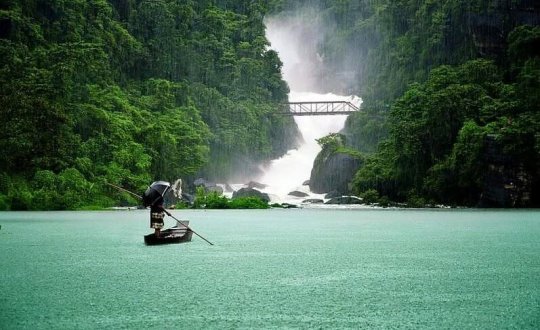
3 notes
·
View notes
Photo




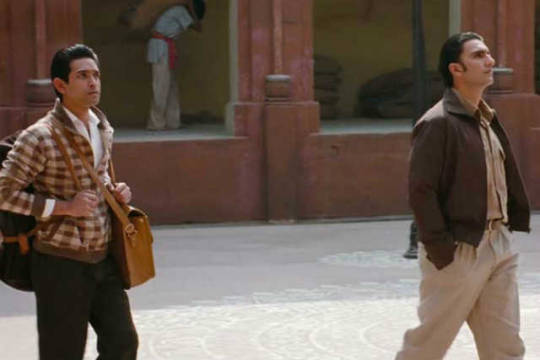
6 Years of Lootera (05/07/2013)
Lootera is a historical romance film directed by Vikramaditya Motwane and partly based on author O. Henry's 1907 short story The Last Leaf. It is the second film directed by Motwane after his critically acclaimed film Udaan. Set in the era of the 1950s, against the backdrop of the Zamindari Abolition Act by the newly independent India, it tells the story of a young archaeologist and the daughter of a Bengali zamindar.
The film stars Ranveer Singh, Sonakshi Sinha, Vikrant Massey, Adil Hussain, and Divya Dutt. The film's producers are Shobha Kapoor, Ekta Kapoor, Anurag Kashyap, and Vikas Bahl, the film features music and background score by Amit Trivedi with all song lyrics penned by Amitabh Bhattacharya and cinematography by Mahendra J. Shetty.
#Lootera (2013)#Vikramaditya Motwane#O. Henry#the last leaf#udaan#ranveer singh#Sonakshi Sinha#vikrant massey#adil hussain#divya dutt#shobha kapoor#ekta kapoor#Anurag Kashyap#vikas bahl#amit trivedi#amitabh bhattacharya#bollywood#bollywood News#bollywoodirect
20 notes
·
View notes
Text
Takarda shooting
Takarda shooting
On May 24, 1948, a violent agitation broke out in Takarda, Ganjam district, to suppress the practice of zamindari and give farmers rights. The pool shot in the pool of the move, the round is 6 people are twenty One of the highlights of the day was the peasant movement and the shooting in Takarda.
The plow whose land is his movement-- The abolition of the mustard system began in 1938. A delegation from the Rajya Sabha met the Shergarh zamindar and demanded that the Koth Rayat pay cash instead of the Mustadar gutta before implementing it. The agitation was launched by the Rayat Mahasabha as no action was taken. It was not limited to Shergarh, but spread to Dharakot, Sankhemundi, Digapahandi and Badgarh estates. In 1942, the Ganjam Zamindari Rayat Sabha was merged with the Odisha Krishak Sabha. In 1943, at the initiative of the peasant assembly and the Communist Party, chaired by Comrade Bhagwati Panigrahi, a civil conference was held in Shergarh. It was decided to strengthen the organization and fight the Mustadar zamindars. The movement began in 1946 under the leadership of Govind Pradhan, Harihar Das, Sardar Dandapani Swayam, Surya Narayan Acharya, Radhakrishna Pradhan, Ragunath Panda, Mohan Bhuiyan, Jur Patra, Dukhishyam Das. Officials from various leading farmers 'and farmers' organizations in Ganjam district were arrested after the agitation intensified, demanding "the land belongs to the plow".
Martyr's altar-- The Martyrs' Cemetery was established in Takarda in memory of the martyred farmers. Which is still known as the epicenter of the leftist movement. That martyr's altar in Takarda still stands as a silent witness to the unity of the peasantry.
0 notes
Text
IL PRIMO STATO A CONCEDERE LE TERRE ALLE DONNE

Con una decisione storica lo stato himalayano dell'Uttarakhand ha concesso alle donne sposate la comproprietà delle terre ancestrali dei loro mariti. È il primo stato indiano a farlo.
La sentenza chiamata Uttarakhand Zamindari Abolition and Land Reforms Act è destinata a oltre 350.000 donne di origine tribale che vivono nei villaggi ai piedi dell’Himalaya, dove la proprietà terriera si tramanda per via patriarcale solo agli uomini. Nello Stato tuttavia negli ultimi decenni si è assistito a una crisi dell’occupazione che ha causato la partenza di tanti uomini in cerca di lavoro e un fenomeno migratorio che ha cambiato gli equilibri sociali. Il governo ha ritenuto giusto che alle donne fosse data la comproprietà della terra e tutti i diritti che avevano dapprima solo i loro mariti.
“Questa ordinanza fornirà dei diritti paritari alle donne. Ciò avrà un impatto importante e farà molto per lo sviluppo dello Stato", ha detto il primo ministro Trivendra Singh Rawa. "Non era giusto che, nonostante lo svolgimento di tutti i lavori agricoli, le donne non potessero prendere decisioni o chiedere prestiti perché la terra era intestata ai loro mariti ". Anche le donne divorziate, a condizione che non abbiano figli con il primo marito, potranno rivendicare la comproprietà della fattoria del padre e, se un marito divorziato fallisce, la sua ex moglie potrà presentare istanza di comproprietà.
_______________
Fonte: Times of India - 19 febbraio 2021

✔ VERIFICATO ALLA FONTE | Guarda il protocollo di Fact checking delle notizie Mezzopieno
✖ BUONE NOTIZIE CAMBIANO IL MONDO. Firma la petizione per avere più informazione positiva in giornali e telegiornali https://www.change.org/p/per-avere-un-informazione-positiva-e-veritiera-in-giornali-e-telegiornali-e-portare-la-comunicazione-gentile-nelle-scuole
0 notes